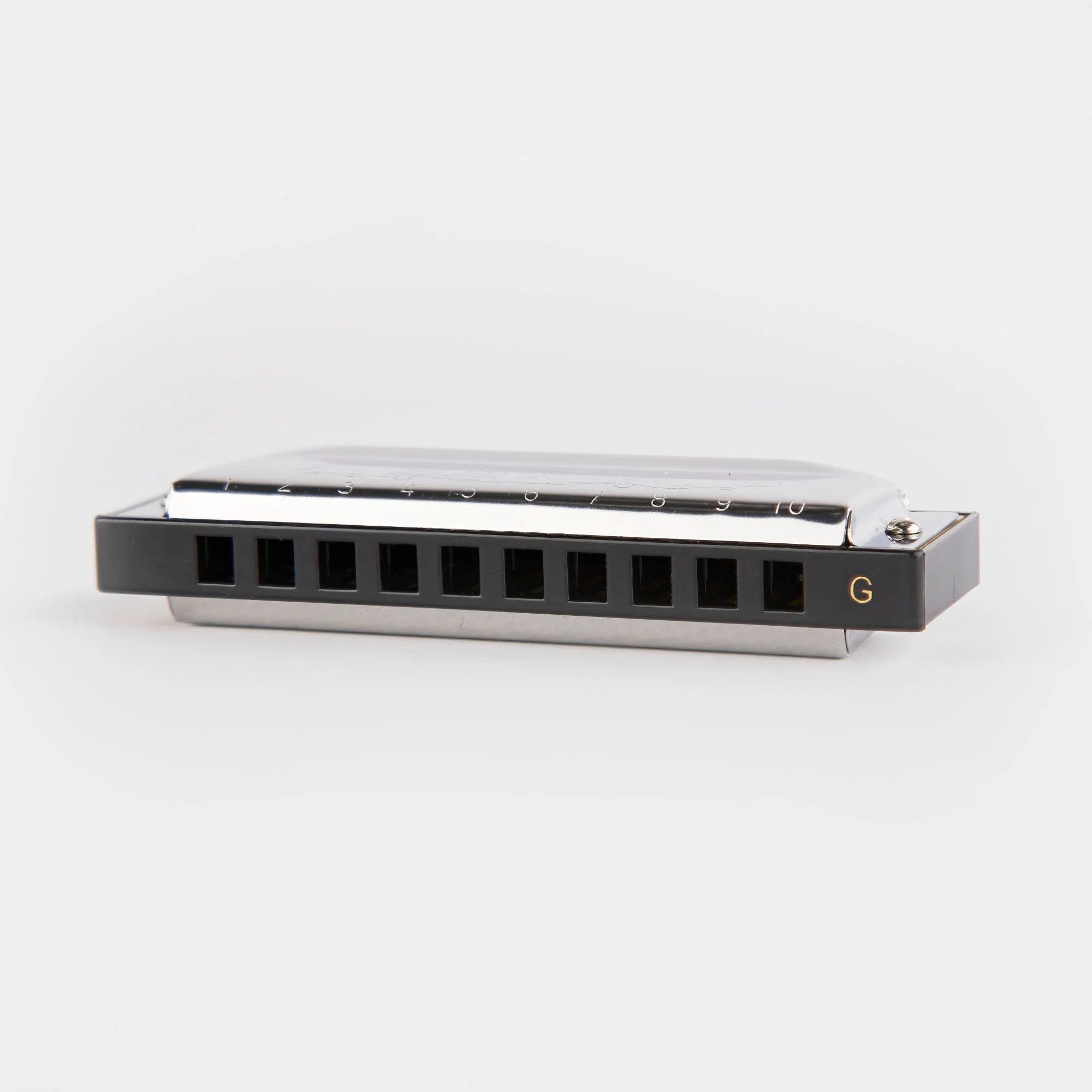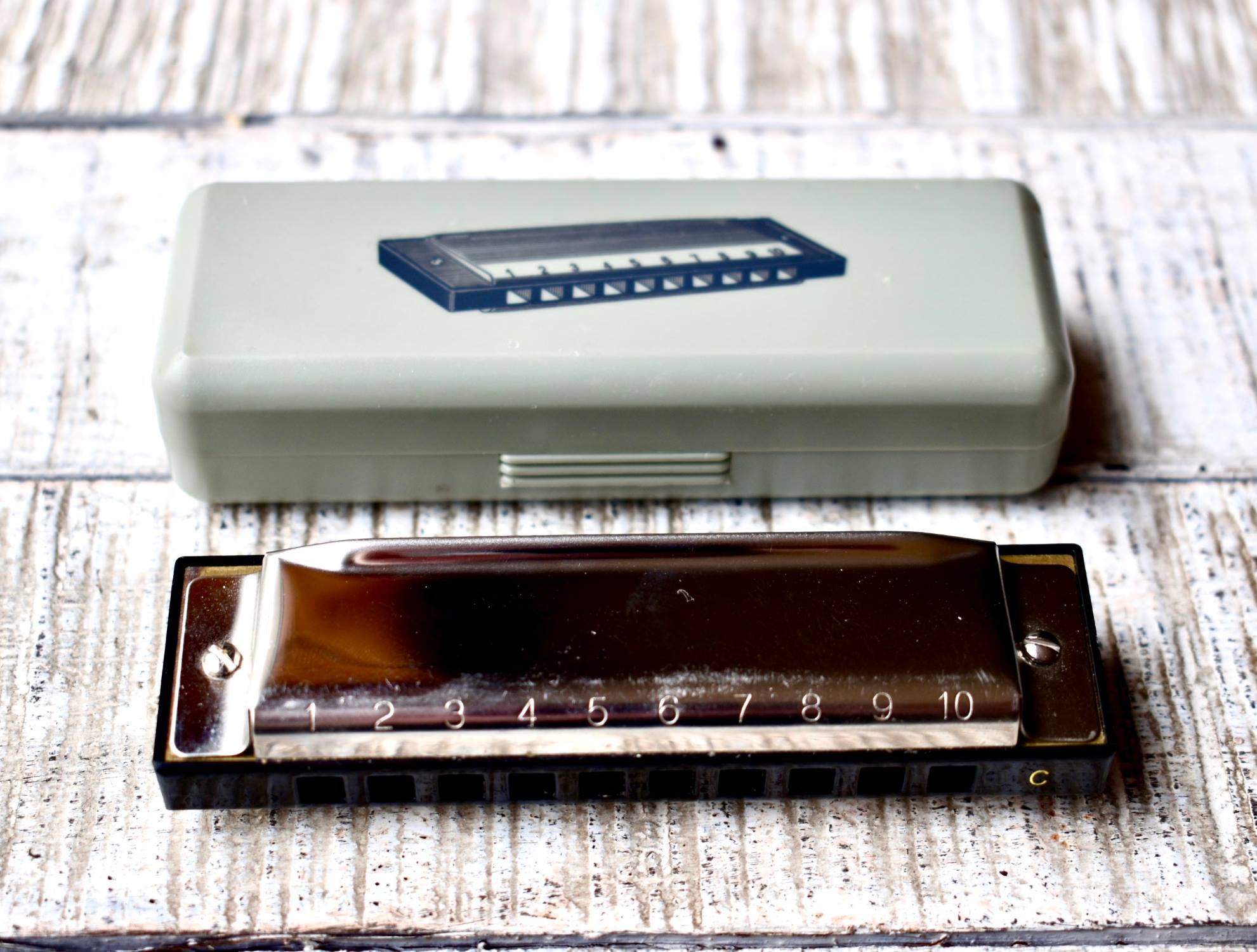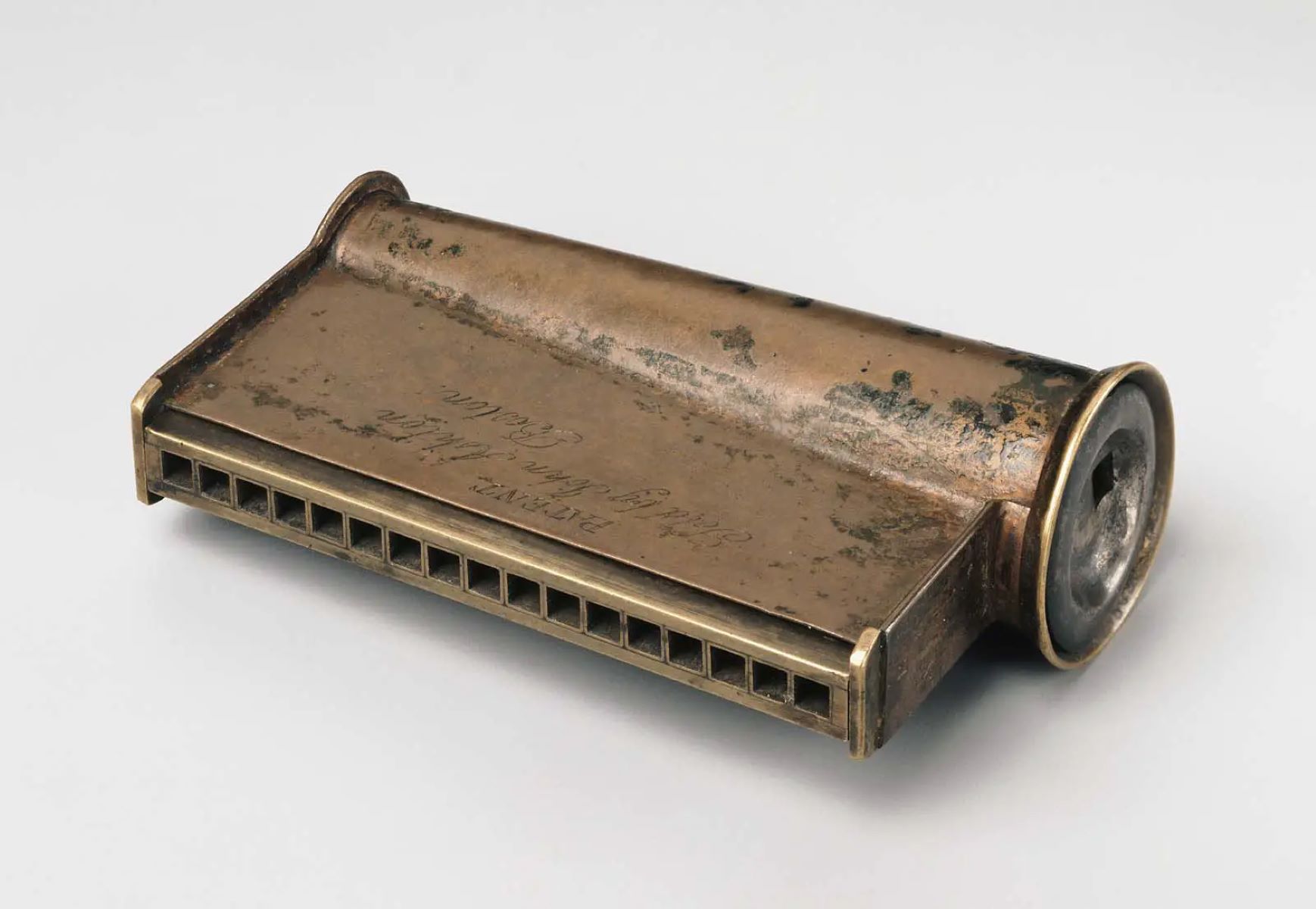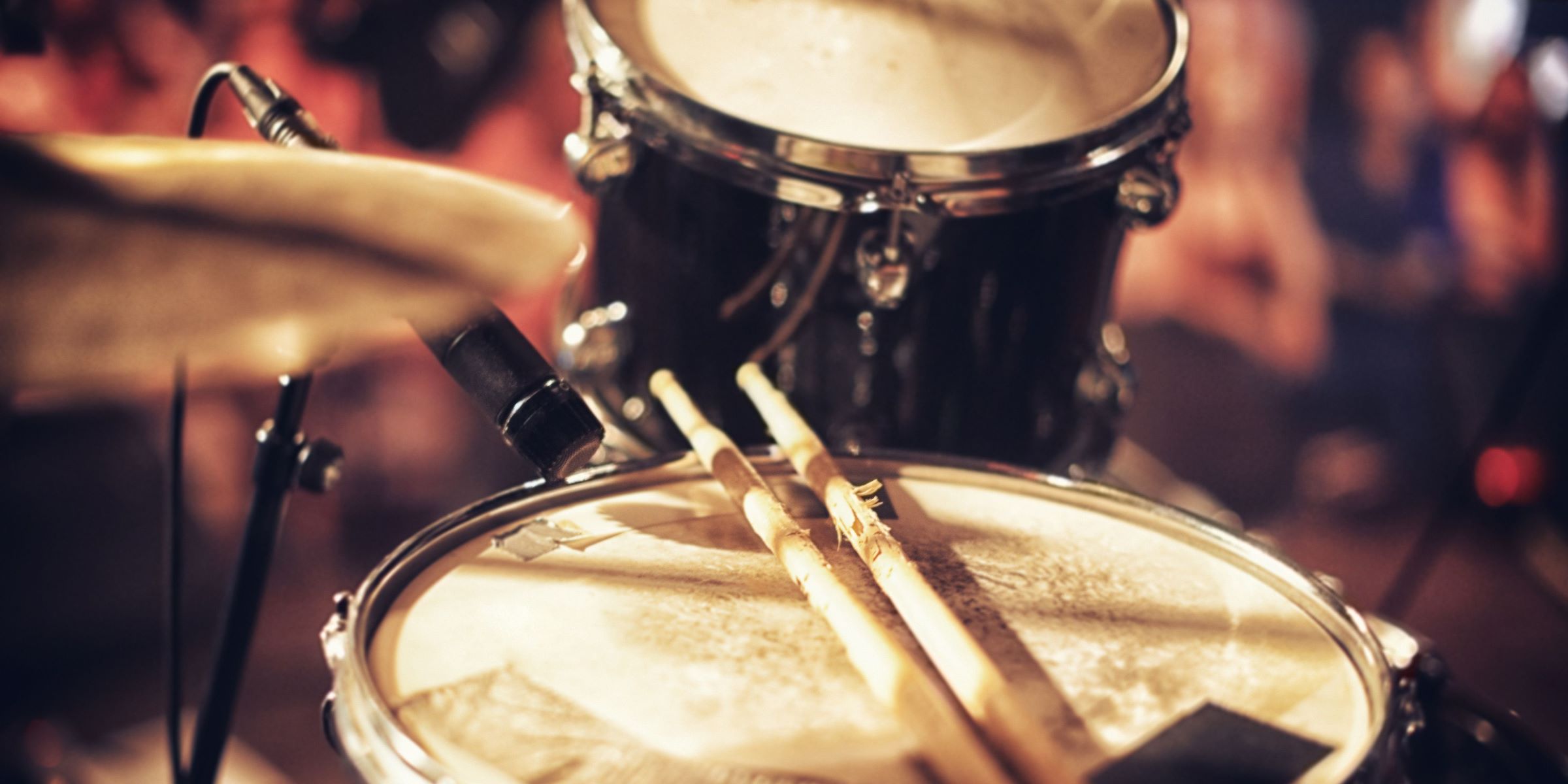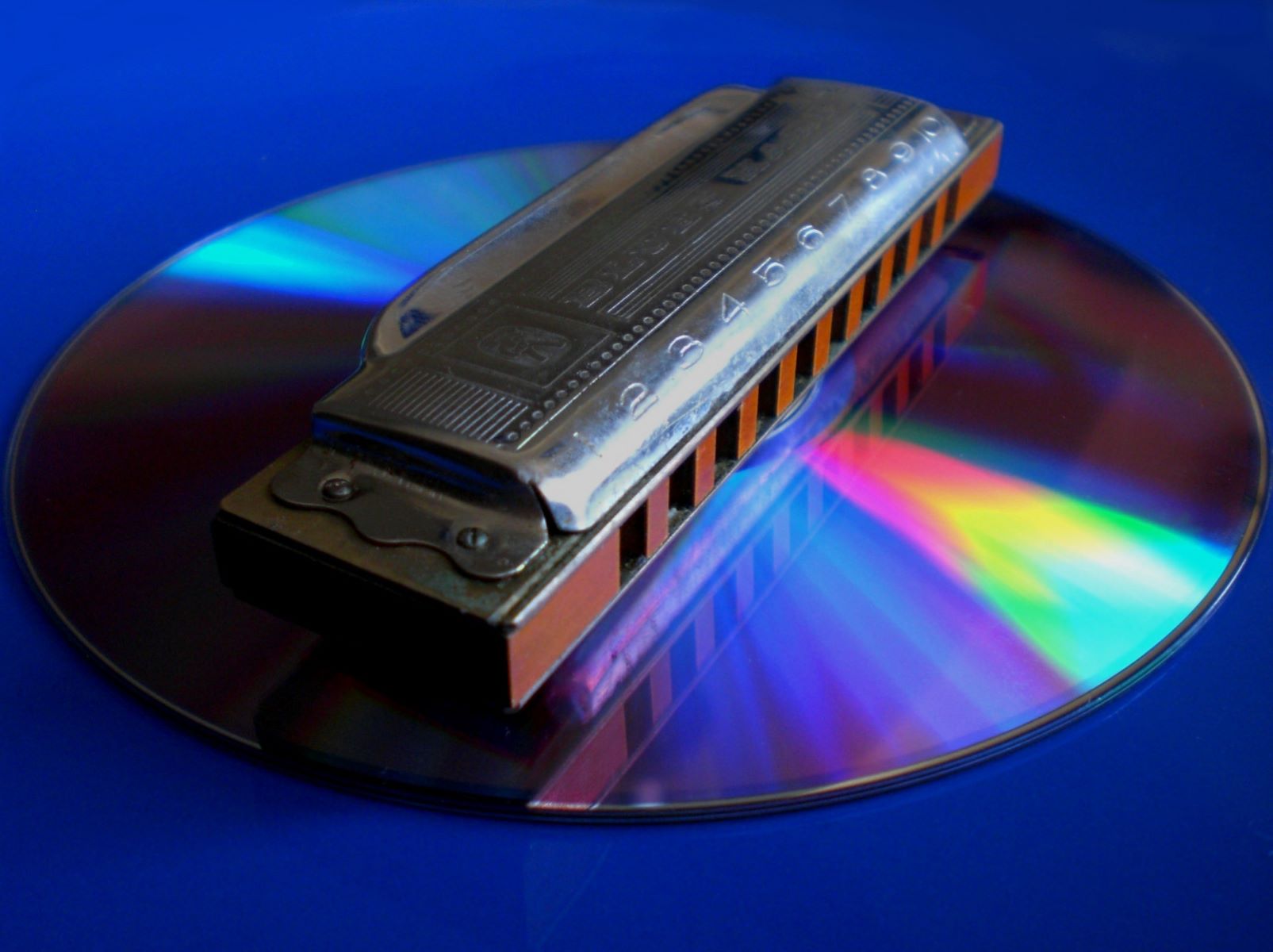Home>Instruments>Harmonica>How Hard Is It To Learn Harmonica


Harmonica
How Hard Is It To Learn Harmonica
Modified: February 3, 2024
Learn harmonica easily with our comprehensive guide. Discover tips, tricks, and techniques to master playing this versatile instrument. Start your musical journey today!
(Many of the links in this article redirect to a specific reviewed product. Your purchase of these products through affiliate links helps to generate commission for AudioLover.com, at no extra cost. Learn more)
Table of Contents
Introduction
When it comes to musical instruments, the harmonica is often overlooked. Yet, this small and unassuming instrument can create soul-stirring melodies and captivate audiences with its unique sound. Learning to play the harmonica can be a rewarding journey, opening up a world of musical expression and personal fulfillment. But just how hard is it to learn harmonica?
The beauty of the harmonica lies not only in its compact size but also in its versatility. From blues and folk to jazz and country, the harmonica has found its place in a wide range of musical genres. With a bit of dedication and practice, anyone can learn to play this fascinating instrument.
One of the great advantages of learning harmonica is its simplicity. Unlike the intricacies of the piano or the technicalities of the guitar, the harmonica offers a fairly straightforward learning curve. It doesn’t require extensive music theory knowledge or proficiency in reading sheet music. Instead, it relies on your ability to blow into the instrument and manipulate the airflow with your tongue and lips to produce different notes and sounds.
Another aspect that makes the harmonica accessible to beginners is its affordability. Compared to other instruments, such as the piano or trumpet, the harmonica is relatively inexpensive, making it a viable option for someone just starting their musical journey.
However, like any musical instrument, mastering the harmonica takes time and effort. It requires patience, practice, and a willingness to explore different techniques and styles. But don’t let that discourage you! The joy of playing the harmonica lies not only in achieving technical proficiency but also in expressing your own unique musicality.
In this article, we will delve into the basics of learning harmonica, provide tips for improving your skills, discuss common challenges you may encounter, and highlight the surprising benefits that come with playing this underrated instrument. So, whether you’re a complete beginner or someone looking to brush up on their harmonica skills, read on to discover the wonders of this melodic treasure.
The Basics of Harmonica
Before diving into learning the harmonica, it’s essential to understand its basic structure and how it produces sound. The harmonica consists of a set of metal reeds mounted on a plastic or wooden comb. These reeds vibrate when air is blown or drawn into the instrument, creating specific pitches.
One of the first things you’ll encounter when picking up a harmonica is the different notes it can produce. Most harmonicas are diatonic, meaning they are designed to play in a specific key. Each hole on the harmonica is associated with one or more reeds that produce different notes depending on whether you blow or draw air.
When you blow into a hole, the reeds vibrate to produce a higher-pitched sound. On the other hand, drawing air from a hole produces a lower-pitched sound. This blowing and drawing technique allows you to play melodies and create different musical phrases.
To play a single note on the harmonica, it’s important to focus and control your breath. Position the harmonica against your lips, cupping it gently with your hands, and ensuring a tight seal. As you blow or draw air into a specific hole, use your tongue and mouth to channel the airflow and isolate the reed you want to activate.
As a beginner, you may find it helpful to start by playing single notes and simple melodies. This will help you develop a sense of control and familiarity with the instrument. Over time, you can progress to playing chords, bending notes, and using various techniques to create different musical effects.
It’s also worth mentioning that there are different types of harmonicas, each with its own unique sound and playing style. The most common type is the ten-hole diatonic harmonica, which is widely used in blues, folk, and rock music. Other types include chromatic harmonicas, which have a sliding button for producing all the notes in the chromatic scale, and tremolo harmonicas, which create a wavering effect by having pairs of reeds for each note.
Now that you have a basic understanding of the harmonica’s structure and playing techniques, you’re ready to embark on your harmonica journey. In the next section, we’ll explore how to get started with learning this enchanting instrument.
Getting Started with Harmonica
So, you’ve decided to venture into the world of harmonica playing. Congratulations! Learning to play the harmonica can be a rewarding and enjoyable experience. To get started, you’ll need a harmonica suited to your playing style and skill level.
When choosing your first harmonica, it’s important to consider the key and type. As a beginner, a ten-hole diatonic harmonica in the key of C is a popular choice. The key of C is often recommended because it’s versatile and widely used in many musical genres. Additionally, it’s a good starting point for learning basic techniques and getting a feel for the instrument.
Once you have your harmonica, spend some time familiarizing yourself with its layout. The harmonica consists of multiple holes, each representing a different pitch. Take note of the numbers or letters printed on the harmonica, which indicate the blow notes and draw notes for each hole.
As a beginner, it’s helpful to start learning some simple songs or melodies to get a sense of rhythm and timing. There are numerous tutorials and resources available online that provide harmonica tablature or sheet music specifically tailored for beginners. These resources will guide you on which holes to play and how to create melodies.
It’s important to practice regularly, even if it’s just for a few minutes each day. Consistency is key when learning any instrument. Set aside dedicated practice time and focus on specific goals or techniques you want to improve. Over time, you’ll notice progress and a better understanding of the instrument.
When practicing, pay attention to your breathing technique. Harmonica playing requires proper breath control, so it’s important to take deep breaths and exhale steadily while playing. Work on developing a relaxed and natural breathing pattern to maintain consistent sound and tone.
Another aspect to consider when getting started with harmonica is the importance of listening to music. Expand your musical horizons by exploring various genres and listening to harmonica players who inspire you. Take note of their techniques, phrasing, and use of dynamics. Listening to experienced harmonica players can greatly enhance your own playing and provide valuable inspiration.
Lastly, don’t be afraid to experiment and have fun with the harmonica. Explore different playing techniques, such as tongue-blocking, vibrato, and bending notes, to add depth and expression to your playing. Remember, the harmonica is not just a simple instrument; it has the potential to create a wide range of sounds and emotions.
Now that you have the basics of getting started with the harmonica, it’s time to dive into the various techniques and styles you can explore. In the next section, we’ll discuss some essential techniques that will help you become a versatile harmonica player.
Learning the Techniques
As you progress in your harmonica journey, it’s important to focus on learning and mastering different techniques that will enhance your playing skills. These techniques will allow you to produce a wider range of sounds and add depth to your musical expression. Let’s explore some essential techniques:
- Single Notes: Playing single notes is the foundation of harmonica playing. Practice isolating individual holes and focusing on producing clear and distinct notes. This technique ensures that you can play melodies accurately.
- Bending Notes: Bending notes is a technique used to create expressive and soulful sounds on the harmonica. By altering the shape of your oral cavity and adjusting the airflow, you can lower the pitch of certain notes. Bending notes adds a touch of bluesy emotion to your playing.
- Vibrato: Vibrato is a musical effect that adds a subtle wavering or shaking sound to your notes. It is achieved by varying the air pressure while playing a sustained note. Vibrato can add depth and character to your playing, creating a more dynamic and captivating performance.
- Tongue-Blocking: Tongue-blocking is a technique where you use your tongue to cover multiple holes and play several notes simultaneously. This technique allows you to play chords, create harmonies, and produce a fuller sound on the harmonica.
- Overblows and Overdraws: Advanced harmonica players can execute overblows and overdraws, which enable them to produce additional notes beyond the normal range of the instrument. These techniques require precise control of breath and embouchure and are commonly used in jazz and blues playing.
It’s crucial to break down each technique and practice them individually before combining them in your playing. Take your time and be patient with yourself as you develop these skills. Regular practice and repetition will help you gradually improve.
Alongside these techniques, it’s important to learn about music theory and how to read harmonica tablature or sheet music. Understanding the structure and theory behind the music will help you grasp melodies, chords, and scales more effectively.
Additionally, listening to various harmonica players and studying their techniques can greatly enhance your own playing. Pay attention to their phrasing, dynamics, and use of different techniques. Try to replicate their playing styles and incorporate their ideas into your own musical expression.
Remember, learning the techniques is an ongoing process. It’s essential to consistently practice and challenge yourself in order to improve. The more you invest in mastering these techniques, the more freedom and creativity you will have in your harmonica playing.
In the next section, we’ll explore different styles of harmonica playing, allowing you to expand your repertoire and discover the genres that resonate with you.
Mastering Different Styles of Harmonica
Playing the harmonica opens up a world of musical possibilities, allowing you to explore various genres and styles. Each music genre has its own unique characteristics and playing techniques that can be mastered with practice and dedication. Let’s delve into some popular styles of harmonica playing:
- Blues Harmonica: Perhaps one of the most iconic and widely recognized styles, blues harmonica is deeply rooted in the expressive and soulful sounds of the blues. It involves bending notes, using vibrato, and playing with a sense of emotion and improvisation. From Delta blues to Chicago blues, mastering the blues harmonica style requires developing a feel for the music and understanding the blues scale.
- Folk and Country Harmonica: Folk and country music often feature the harmonica as a prominent instrument. To excel in this style, you’ll need to focus on playing melodies with precision, incorporating chords, and utilizing techniques such as tongue-blocking and vibrato. Explore traditional folk tunes, country ballads, and bluegrass music to broaden your repertoire.
- Jazz Harmonica: Jazz harmonica is characterized by its rich improvisation, melodic phrasing, and complex harmonies. Mastering this style involves learning different scales and modes, as well as practicing chord progressions. Jazz harmonica players often use advanced techniques like overblows and overdraws to expand their range and create intricate melodies.
- Rock and Pop Harmonica: The harmonica has made its mark on many rock and pop songs, adding flair and a distinctive sound. This style emphasizes catchy riffs, melodic hooks, and rhythmic playing. Focus on mastering single notes, playing in different positions, and incorporating bending and vibrato techniques to capture the essence of this genre.
- Classical Harmonica: Classical harmonica playing is less common but offers a unique opportunity to explore the harmonica’s capabilities in a classical music context. This style involves playing classical compositions, adapting violin or piano pieces, and focusing on precise technique, articulation, and dynamics. Classical harmonica playing can be a challenging yet rewarding endeavor that showcases the instrument’s versatility.
Keep in mind that these style categories are not mutually exclusive, and many harmonica players experiment and combine different genres to create their own unique sound. Each style requires its own specific techniques and approaches, so take the time to study and practice the nuances of each style that interests you.
Listening to harmonica players in different genres is essential to understanding the nuances and subtleties of each style. Pay close attention to their phrasing, tone, and use of different techniques. By studying and emulating these players, you can develop your own style and take your harmonica playing to new heights.
Remember that mastering different styles of harmonica playing takes time and dedication. Start with the style that resonates with you the most and gradually expand your repertoire. As you dive deeper into each style, you’ll discover new techniques, gain a deeper understanding of the music, and uncover your own unique voice as a harmonica player.
In the next section, we’ll provide some valuable tips to help you improve your harmonica skills and overcome common challenges that may arise along the way.
Tips for Improving Harmonica Skills
Improving your harmonica skills requires dedication, practice, and a willingness to learn. Whether you’re a beginner or an experienced player looking to enhance your abilities, here are some valuable tips to help you on your journey:
- Consistent Practice: Regular practice is key to improving any musical skill. Set aside dedicated time each day or week to practice your harmonica. Even just a few minutes of focused practice can make a difference. Gradually increase the duration and intensity of your practice sessions as you progress.
- Start Slow, Progress Gradually: When learning new techniques or songs, start slow and focus on accuracy and precision. It’s better to play something correctly at a slower tempo than to rush through it and develop bad habits. As you become comfortable, gradually increase the speed and complexity.
- Record and Listen: Record yourself while playing and listen back to identify areas for improvement. Pay attention to your timing, tone, and overall musicality. This self-evaluation can help you identify weak spots and track your progress over time.
- Seek Guidance: Consider taking harmonica lessons from a qualified instructor. A teacher can provide valuable feedback, correct any bad habits, and guide you through proper technique and music theory. Additionally, online tutorials and resources can serve as useful references for self-guided learning.
- Join a Harmonica Community: Engaging with other harmonica enthusiasts can provide motivation and inspiration. Join online forums or local harmonica groups, attend workshops or jams, and share your experiences with fellow players. Learning from others and discussing your challenges and triumphs can significantly enhance your growth as a harmonica player.
- Transcribe Songs and Solos: Transcribing songs or solos played by experienced harmonica players is an excellent way to develop your ear and learn new techniques. Analyze the melodies, phrasing, and techniques used in those recordings. Transcribing will help you internalize the music and expand your repertoire.
- Experiment and Be Creative: Don’t be afraid to experiment with different playing styles, genres, and techniques. This experimentation and creativity will help you develop your own unique musical voice on the harmonica. Break free from following instructions rigidly and allow your emotions and instincts to drive your playing.
- Listen Widely and Openly: Alongside harmonica-specific learning, expose yourself to a wide variety of music. Listen to different artists and genres, including those that don’t typically feature the harmonica. By broadening your musical horizons, you can gain inspiration and incorporate diverse elements into your harmonica playing.
- Stay Patient and Persistent: Learning any instrument takes time and effort. It’s important to stay patient with yourself and celebrate small victories along the way. There may be challenges and moments of frustration, but perseverance will ultimately lead to progress and growth as a harmonica player.
Remember, each player’s journey with the harmonica is unique. Embrace the process, stay motivated, and enjoy the exploration of this beautiful instrument. With dedication and a love for music, you can continually improve your harmonica skills and unlock new levels of musical expression.
In the next section, we’ll address some of the challenges you may encounter while learning the harmonica and offer strategies to overcome them.
Challenges Faced While Learning Harmonica
Learning the harmonica can be an exciting and rewarding journey, but like any musical instrument, it comes with its own set of challenges. Understanding and addressing these challenges can help you stay motivated and overcome any obstacles that may arise. Here are some common challenges faced while learning the harmonica:
- Getting Clear Single Notes: Achieving clear and distinct single notes can be challenging for beginners. It requires precise breath control and tongue positioning. Practice isolating each hole and focus on producing clean notes. Start with slower songs or exercises that emphasize single notes and gradually build up your speed and accuracy.
- Bending Notes: Bending notes is a fundamental technique in harmonica playing, but it can be difficult to master. It requires control of airflow and precise tongue and mouth positioning. Start by practicing on the lower-pitched holes and gradually work your way up. Use practice exercises and tutorials dedicated to bending notes to improve your technique.
- Playing in Multiple Positions: Playing in different positions involves using the same harmonica to play in different keys and scales. This can be challenging as it requires understanding music theory and knowing which notes to emphasize. Take the time to study position playing and practice using various keys to become comfortable playing in different positions.
- Developing Fluidity and Speed: Playing fluidly and at faster tempos can be a challenge, especially for beginners. Building muscle memory and finger dexterity takes time and practice. Start by practicing slow and gradually increase the tempo as you become comfortable. Break down more challenging songs or licks into smaller chunks and practice them at a slower pace before combining everything together.
- Overcoming Plateaus: Plateaus are common in any learning process, including harmonica playing. You may reach a point where progress seems to stall, and it can be frustrating. During these times, it’s important to stay patient and consistent with your practice. Seek new challenges, explore different genres, or learn new techniques to push past the plateau and reignite your passion for the instrument.
- Building Breath Control: Proper breath control is crucial for playing the harmonica. It can be challenging to maintain steady airflow and endurance, particularly for longer phrases or songs. Practice breathing exercises outside of harmonica playing to improve your lung capacity and control. Work on strengthening your diaphragm to ensure a consistent and controlled breath while playing.
Remember that these challenges are a normal part of the learning process and shouldn’t discourage you. Take them as opportunities to grow and improve. Break down the challenges into manageable steps, seek guidance from experienced players or instructors, and maintain a consistent practice routine to enhance your skills.
In the next section, we’ll discuss some common mistakes to avoid to help you progress more efficiently in your harmonica playing.
Common Mistakes to Avoid
When learning any musical instrument, it’s normal to make mistakes along the way. However, being aware of common pitfalls can help you avoid unnecessary setbacks and progress more efficiently in your harmonica playing. Here are some common mistakes to watch out for:
- Poor Breath Control: One of the most common mistakes beginners make is inconsistent or improper breath control. Avoid shallow or uneven breaths as they can impact your tone and overall sound quality. Practice deep, controlled breathing to ensure a consistent airflow and tone while playing.
- Overblowing or Overdrawing: Overblowing or overdrawing refers to unintentionally producing higher-pitched or off-pitch sounds while playing. This typically occurs when applying excessive pressure or not properly controlling airflow. Work on precision and consistency in your embouchure to avoid unintentional overblows or overdraws.
- Ignoring Proper Technique: The harmonica requires proper technique to achieve the desired sounds. Don’t underestimate the importance of correct hand positioning, tongue articulation, and mouth shape. Neglecting these aspects can hinder your progress and limit your ability to explore different playing techniques.
- Skipping Music Theory: While playing by ear is a valuable skill, understanding music theory can greatly enhance your harmonica playing. Don’t avoid learning basic music theory, including scales, chords, and key signatures. This knowledge will help you navigate different musical styles, adapt to different keys, and communicate with other musicians effectively.
- Lack of Patience and Persistence: Learning to play the harmonica takes time and dedication. Avoid expecting instant mastery and be patient with yourself. Progress may come more slowly at times, but consistent practice and persistence will yield results. Enjoy the journey and celebrate each milestone along the way.
- Ignoring the Importance of Listening: Listening to other harmonica players and various music genres is crucial for both inspiration and growth. Don’t solely focus on playing techniques; take the time to listen to different styles and harmonica players. This exposure will broaden your musical perspective and inspire you to explore new techniques and ideas.
- Neglecting Regular Maintenance: Like any instrument, the harmonica requires regular cleaning and maintenance to ensure optimal performance. Neglecting this aspect can lead to sticky reeds, stale odors, and diminished sound quality. Clean your harmonica regularly, following manufacturer guidelines, and avoid exposing it to extreme temperatures or excess moisture.
Avoiding these common mistakes will help you progress more effectively in your harmonica journey. Be mindful of your technique, invest time in foundational skills, embrace music theory, and stay patient and persistent. With commitment and a dedication to improvement, you’ll overcome these challenges and achieve greater proficiency on the harmonica.
In the final section, we’ll explore some of the surprising benefits that come with learning to play the harmonica.
Surprising Benefits of Learning Harmonica
Learning to play the harmonica offers more than just musical fulfillment. It provides a range of surprising benefits that can positively impact various aspects of your life. Here are some unexpected advantages of learning harmonica:
- Stress Relief and Emotional Expression: Playing the harmonica can serve as a therapeutic outlet for stress and emotional expression. The act of playing music can help reduce anxiety, improve mood, and provide a creative way to express and process emotions.
- Improved Respiratory Health: Playing the harmonica involves controlled breathing techniques, which can strengthen your respiratory muscles, increase lung capacity, and improve overall lung health. Regular practice can have positive effects on your respiratory system, promoting better breathing habits and potentially reducing the risk of respiratory issues.
- Enhanced Cognitive Function: Learning an instrument like the harmonica can have cognitive benefits. It demands concentration, memory recall, and coordination. Regular practice can improve your ability to focus, enhance memory retention, and strengthen hand-eye coordination.
- Boost in Confidence and Self-Esteem: Progressing in your harmonica playing can boost your confidence and improve self-esteem. Meeting personal musical goals, performing for others, and seeing your skills develop over time can bring a sense of accomplishment and pride.
- Opportunities for Social Interaction: Playing the harmonica can open doors to new social connections. Harmonica enthusiasts often form communities, participate in group jams, or join bands where they can share their passion for music with others. These social interactions help create lasting friendships and provide opportunities for collaboration and musical growth.
- Improved Focus and Mindfulness: Playing the harmonica requires focus and concentration, as you need to synchronize breathing, hand movements, and pitch control. This practice can enhance your ability to be present in the moment and cultivate a sense of mindfulness.
- Stimulates Creativity and Improvisation: Harmonica playing encourages improvisation and creativity. As you become more proficient, you can experiment with different playing styles, techniques, and musical genres. This freedom to express yourself creatively fosters personal growth and expands your musical horizons.
- Brain Exercise and Neuroplasticity: Learning a musical instrument like the harmonica engages your brain in unique ways, stimulating neural connections and promoting neuroplasticity. Regular practice challenges your brain to adapt, strengthen neural pathways, and enhance overall cognitive function.
- Portable and Versatile Instrument: The harmonica’s small size and portability make it a versatile instrument that can be enjoyed anytime, anywhere. Whether you’re traveling, spending time outdoors, or simply looking for a musical companion, the harmonica offers a convenient and accessible option.
These surprising benefits go beyond the pure enjoyment of playing music. Learning the harmonica can positively impact your mental, emotional, and physical well-being. It provides a creative outlet for self-expression, an avenue for personal growth, and an opportunity to connect with others through the universal language of music.
Whether you aspire to become a professional harmonica player or simply want to enjoy the therapeutic benefits of playing, investing time in learning the harmonica will enrich your life in more ways than you can imagine.
As we conclude this article, remember to embrace the journey, stay committed to regular practice, and embrace the joys and challenges that come with learning the harmonica. Enjoy the enchanting melodies you create and continue exploring the boundless possibilities that this humble instrument offers.
Conclusion
The harmonica is a remarkable instrument that offers a world of musical possibilities. Learning to play it may seem daunting at first, but with dedication, practice, and a willingness to explore, you can master this captivating instrument.
Throughout this article, we’ve explored the basics of harmonica playing, from understanding its structure and producing notes to learning essential techniques and exploring different playing styles. We’ve discussed the importance of consistent practice, seeking guidance, and embracing the challenges that come with learning harmonica.
We’ve also highlighted some surprising benefits that come with playing the harmonica, such as stress relief, improved respiratory health, cognitive enhancement, boosted confidence, and opportunities for social interaction. The harmonica is not only a means of personal expression but also a pathway to personal growth and self-discovery.
As you embark on your harmonica journey, remember to be patient with yourself, stay dedicated to practicing regularly, and seek inspiration from other harmonica players. Embrace the joy of experimentation, creativity, and self-expression as you develop your own unique style and sound.
The harmonica may be small, but its impact is mighty. It has the power to transport both the player and the listener to a world of musical enchantment. So, pick up your harmonica, let its breathy tones fill the air, and embark on a musical adventure unlike any other.
Now, go forth and explore the harmonica’s melodic possibilities. Immerse yourself in the rhythms, melodies, and emotions that this exceptional instrument can evoke. Let the harmonica become an extension of your soul and a vehicle for your musical expression.
Whether you’re playing for your own enjoyment, performing for others, or dreaming of the stage, the harmonica has the potential to bring immense joy and fulfillment into your life. So, don’t hesitate – let the harmonica be your faithful companion on this musical journey, and let the sweet sounds of this humble instrument resonate within you for years to come.

